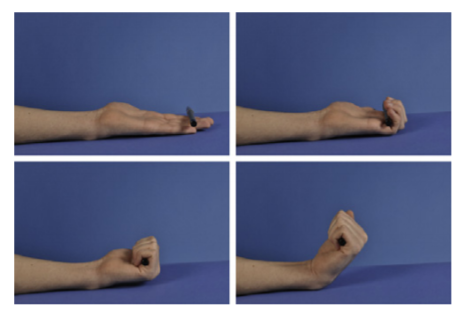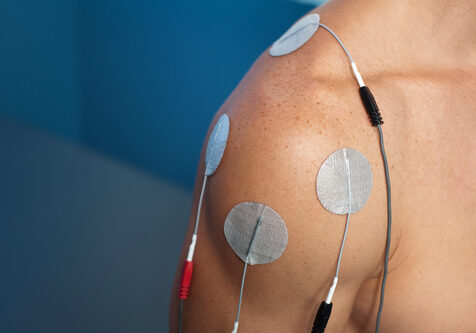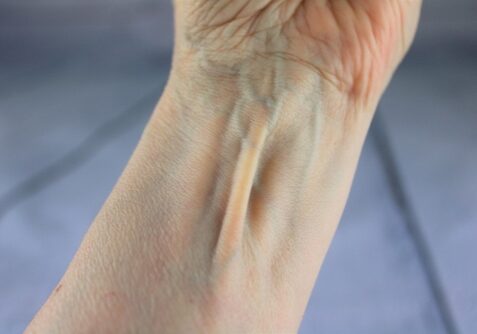Prevention and Management of UE injuries in Modern Mass Production
Filed under Uncategorized
Reference: Pitts, G., Custer, M., Foister, R. D., & Uhl, T. (2021). The hand therapist’s role in the prevention and management of upper extremity injuries in the modern mass production industrial setting. Journal of Hand Therapy, 34(2), 237–249. https://doi.org/10.1016/j.jht.2021.04.019
By: Kaylen Kallander
The Skinny: This study included four case studies to determine the impact of hand therapy for workers in the modern mass production industrial setting. The purpose was to analyze the effect and variety of several services that hand therapists can provide on site to promote an expedited return to work for injured employees.
In the Weeds: Four case studies were chosen to study the effect of on site hand therapist involvement in modern mass industries. The first was a 21 year old with congenital macrodactyly at the left long finger, ulnar nerve intrinsic wasting, and median nerve compression with thenar atrophy. This was followed by a 38 year old with lateral epicondylosis, a 47 year old with carpal tunnel syndrome, and a 39 year old with a TFCC injury. The hand therapist’s job was to analyze the worker and their job site an average of 12 weeks to determine the best solutions for the specific worker using the QuickDASH to measure change in patient function and disability. Interventions included a hierarchical of functional return level system, post-surgical management, work conditioning programs, functional capacity evaluations, job analysis, OSHA first aid to detect medical need early on, ergonomic adjustments, and post-offer employee testing for new hires. The most commonly used interventions for the second to fourth case studies were
orthotics, the hierarchical of functional return level system, and ergonomic or medical recommendations.
Hierarchical of Functional Return Level System
Bringing It Home: For the first case study, the worker’s gross motor skills were significantly greater than their fine motor skills. With this knowledge, the therapist provided the employer with this information, resulting in the worker being matched to a job opening emphasizing gross motor movement rather than fine detailed work. For the second case study with lateral epicondylosis, the QuickDASH score was improved by 26.2% over the span of 12 weeks with the use of an orthotic, hierarchical of functional return level system, and an ergonomic recommendation for his employer to purchase a hydraulic lift for further prevention of elbow injuries. The third worker with carpal tunnel syndrome did not have a change in their QuickDASH score, however, their AROM resulted in 90%, normal sensation to median nerve,
and 80% strength compared to nonaffected side. This was achieved with an orthotic, hierarchical of functional return level system, and recommendations for neurological testing. Lastly, the TFCC injured worker was referred for surgery by the doctor. The therapist worked on the hierarchical of functional return level system, ergonomics, and OSHA first aid program, resulting in a 51.5% QuickDASH score improvement, 90% AROM, and 80% strength.
The researchers found in each case study that communication with employers was the most important for helping employees return to work safely at a functional level. Due to the ever growing technology, future therapist roles would include evaluating fit and function of exoskeletons and using biomarker technology to track vitals and physical stress load,.
Rating: 3/5. This article gives a good outline of what services hand therapists can provide in industrial production settings with standardized improvements to show effectiveness. However, with a case study design, there is a small sample size with no control or experimental group. In addition, there were a few typos in the titles and numbers of the data tables and subheadings, making the data results difficult to follow.
More To Read
Is HEP Just as Good as Therapy for Metacarpal Fracture Rehab?
Gülke, J., Leopold, B., Grözinger, D., Drews, B., Paschke, S., & Wachter, N. J. (2018). Postoperative treatment of metacarpal fractures – Classical physical therapy compared with a home exercise program. Journal of Hand Therapy, 31(1), 20-28. The Skinny – Medicine is moving towards a model that encourages less direct intervention and a more DIY focus…
Read MoreThe Use of Neuromuscular Electrical Stimulation with Upper Extremity Paralysis
The Use of Neuromuscular Electrical Stimulation with Upper Extremity Paralysis By: Mikayla Murphy Martin, R., Johnston, K., & Sadowsky, C. (2012). Neuromuscular electrical stimulation–assisted grasp training and restoration of function in the tetraplegic hand: A case series. The American Journal of Occupational Therapy, 66(4), 471-477. https://doi.org/10.5014/ajot.2012.003004 The Skinny The purpose of the study was to…
Read MoreExploring Unique Hand Anatomy
Exploring Unique Hand Anatomy The human hand is a marvel of intricate design with a combination of fine motor capabilities and strength that enable us to perform fine motor tasks ranging from delicate surgery to more gross motor tasks such as carrying heavy loads. However, no two hands are exactly alike. Anatomical variations while they…
Read MoreSign-up to Get Updates Straight to Your Inbox!
Sign up with us and we will send you regular blog posts on everything hand therapy, notices every time we upload new videos and tutorials, along with handout, protocols, and other useful information.





